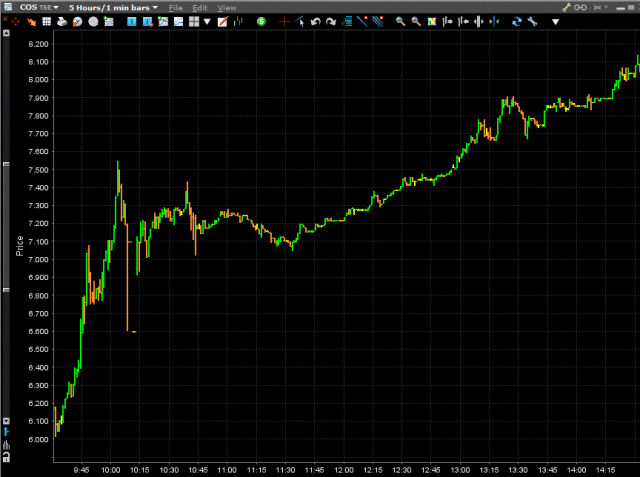Whether it’s Tim Hortons (TSX: THI), Wendy’s (NYSE: WEN), Starbucks (Nasdaq: SBUX), etc., fast food is a big business. There are winners and losers and the game is mostly zero-sum. Finding the losers at any point in time is much better than finding the winners – at least you’ll know who to avoid.
The most recent trend that I can discern in the industry is the trend toward customization and “quality” fast food. Specifically the winners of the new tastes in customer trends appear to be corporations like Chipotle Mexican Grill (Nasdaq: CMG) that, judging by their $700/share price and $22 billion market valuation, have valuations that are trading in the stratosphere. It hit the magic formula by going for a territory that was previously covered by independents (mainly the truck-side stands in the USA where you can get a good burrito for a few bucks made by actual Mexicans of unknown immigration status), “quality” (just observer all the health propaganda about organic this-and-that), and customization (e.g. this Youtube video of some guy visiting an international franchise in London, England is a fairly good example). Results: the hopes and dreams of short-sellers crushed into oblivion. (Just pull up the rocket ship known as a 5-year chart of CMG and you will see what I mean – they’ve done twice as well as Amazon!).
Franchises like Five Guys and Fatburger are all in the same zero-sum space for burgers, which is a much more competitive environment. You also have Burger King (going through the pains of integration with its Tim Hortons merger), and you have McDonalds.
However, this post was not about the winners, it is about the losers.
And that, for today (and definitely not for tomorrow), is McDonalds.
My attention was swayed by a very brief Marketwatch article about their new marketing campaign, and specifically the following:
McDonald’s released its 2015 Super Bowl ad which spins off the long-running “I’m lovin’ it” campaign. The ad shows customers ordering food. When the cashier rings them up, the cashier ask customers to pay by an act of love rather than cash.
The “Lovin’ Act” extends beyond your TV screen and to actual restaurants. Between Feb. 2 and 14, randomly selected customers will be asked by each store’s “Lovin’ Lead” to execute an act subject to the lead’s discretion. 100 customers per store will be chosen to win throughout the duration of the promotion.
The amount of cultural damage that must be going on in McDonald’s at the moment to allow such a marketing campaign to hit the public must be immense. They already recently fired their CEO (a positive step) and hopefully once the marketing people have had a chance to analyze what a disaster this campaign is going to be, they will actually settle down and concentrate on what they were always supposed to be good for: reliably inexpensive fast food. Maybe by firing their marketing team that conceived of their last campaign, they can save on future costs.
Those familiar with the history of fast food companies will remember the similar slump McDonalds went into 2001-2003 where they finally snapped out of their dementia. Other fast food chains have gone into similar states over the past decade, notably Domino’s Pizza’s (NYSE: DPZ) mea culpa confession that its product tasted like cardboard, and Howard Schultz coming back to Starbucks to get the corporation to realize that people came to Starbucks for coffee and not breakfast or lunch sandwiches.
Interestingly enough, I think Wendy’s is also executing correctly on a turnaround and is eating McDonalds’ lunch. I’ve been eyeing them back since early 2014 and while I am very unlikely to purchase any common shares at current values, I do find this space to be fascinating from a business and marketing perspective.

